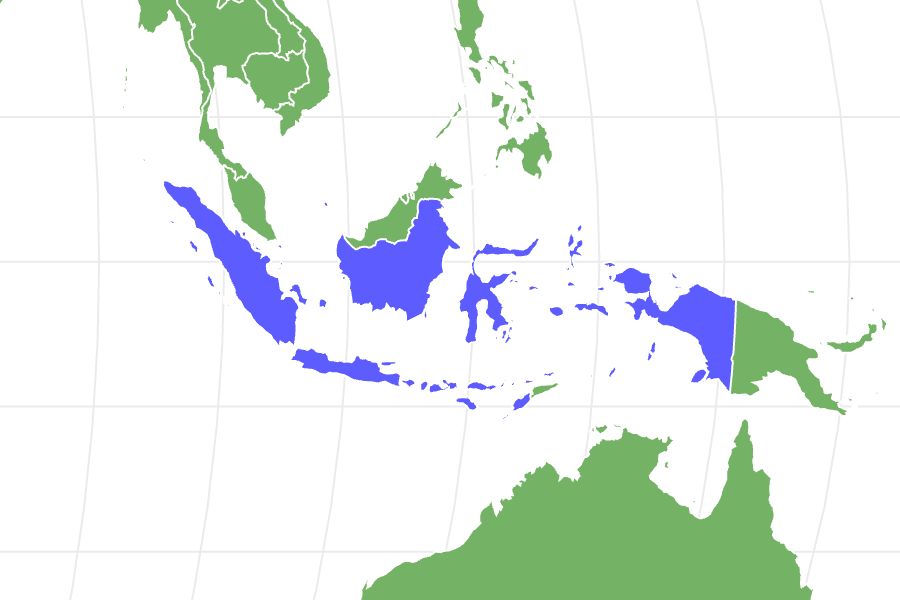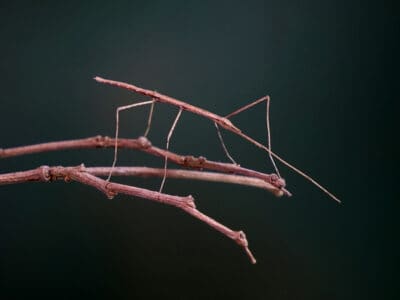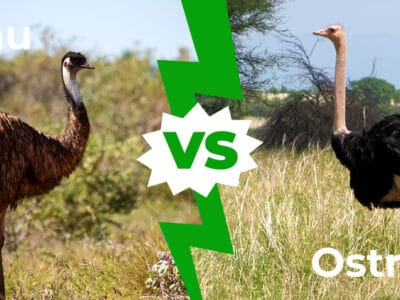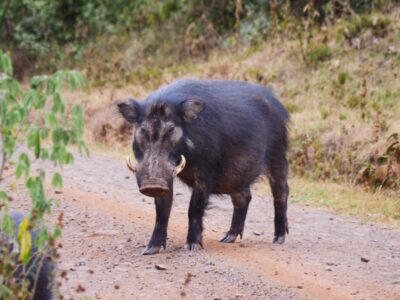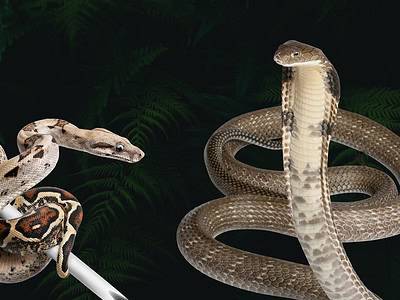Javan Leopard
Panthera pardus melas
Deathly afraid of water
Advertisement
Javan Leopard Scientific Classification
- Kingdom
- Animalia
- Phylum
- Chordata
- Class
- Mammalia
- Order
- Carnivora
- Family
- Felidae
- Genus
- Panthera
- Scientific Name
- Panthera pardus melas
Read our Complete Guide to Classification of Animals.
Javan Leopard Conservation Status
Javan Leopard Facts
- Prey
- Deer, board, monkeys
- Main Prey
- Muntjac
- Name Of Young
- Cub
- Group Behavior
- Solitary
- Fun Fact
- Deathly afraid of water
- Estimated Population Size
- 250-350 mature adults
- Biggest Threat
- Deforestation
- Most Distinctive Feature
- Dark rosettes on the fur
- Distinctive Feature
- Powerful jaws and claws
- Gestation Period
- 3 months
- Litter Size
- 2-4 cubs
- Habitat
- Tropical rainforests, deciduous forests, mixed forests
- Predators
- None
- Diet
- Carnivore
- Lifestyle
- Crepuscular
- Number Of Species
- 1
- Location
- Indonesia (Java)
View all of the Javan Leopard images!
“Javan leopards are deathly afraid of water.”
Summary
The Javan leopard is a subspecies of leopard native to the island of Java in Indonesia. Javan leopards measure around two-thirds the size of normal leopards, but that doesn’t make them any less dangerous or powerful. While they can carry prey twice their size into trees so they can eat in private, they will actively avoid prey near water because they hate to swim or get their fur wet. They are considered endangered due to habitat loss and illegal hunting, with only 250 or so mature adults left in the wild.
5 Javan Leopard Facts
- Javan leopards can either have a spotted coat with rosettes or an all-black coat similar to a panther.
- Unlike other leopards, Javan leopards hate water. They don’t like to swim or get their fur wet and actively avoid prey near water.
- These cats are solitary, spending most of their lives by themselves except during the mating season.
- Females give birth to two to four cubs, which remain with their mother for one to two years.
- While the average Javan leopard lives between 13 and 15 years in the wild they can live up to a maximum of 20 years.
Javan Leopard Scientific name
The Javan leopard is a subspecies of leopard in the cat family Felidae. It gets its common name from its geographic distribution as you can only find them on the Indonesian island of Java. As for the word leopard, it comes from the Greek word λεόπαρδος (leopardus), which likely derives from the words leon, meaning “lion,” and pardos, meaning “spotted.” Javan leopards belong to the genus Panthera, which also contains all extant lion, tiger, jaguar, and leopard species. The word panther derives from the Latin panthēra, which refers to a specific kind of net used for catching animals. In turn, panthēra comes from the Greek word panther, meaning “panther.” Their full scientific name is Panthera pardus melas, with the word melas coming from the Greek word μέλᾱς, meaning “dark” or “black.”
Javan Leopard Appearance
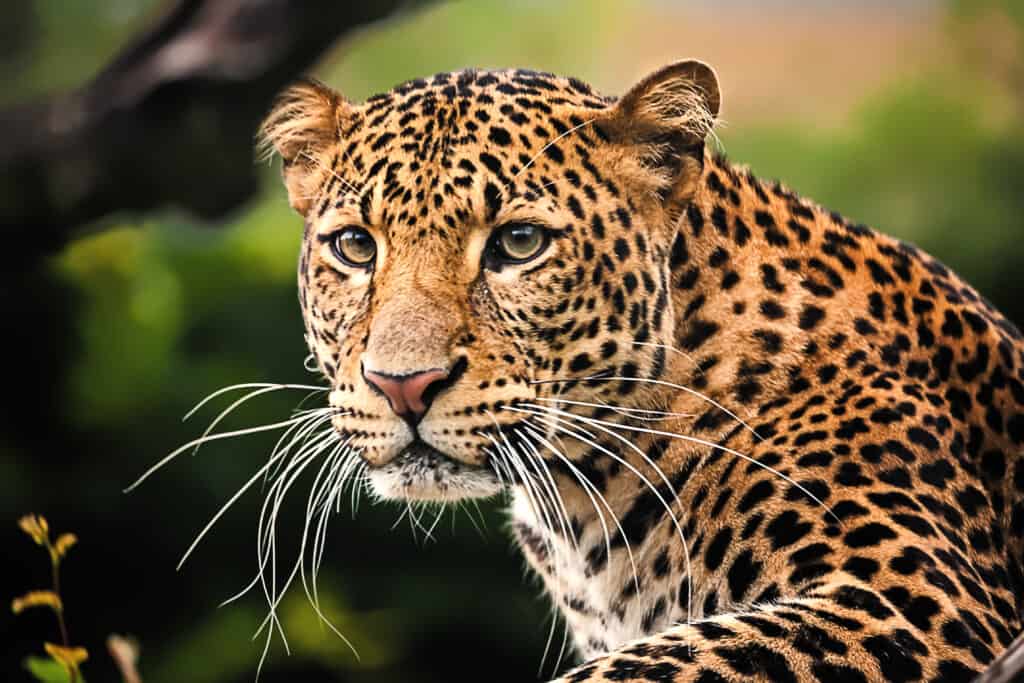
Javan leopards have thick, soft fur that varies in color from yellow to dark gold on the back, legs, and head, while the belly appears white.
©abxyz/Shutterstock.com
In terms of appearance, they roughly resemble other leopards, only slightly smaller. On average, they measure approximately two-thirds the size of leopards found throughout Africa and most of Asia. They measure 23 to 41 inches tall, 39.8 and 63 inches long, and 110 to 154 pounds in weight, with males typically measuring larger than females. The limbs are relatively short, while the head is broad, and the body is elongated and muscular. Javan leopards have thick, soft fur that varies in color from yellow to dark gold on the back, legs, and head, while the belly appears white. The fur normally includes black markings grouped in patterns known as rosettes. However, some have a recessive phenotype that results in an entirely black coat.
Evolution and History
According to research, this cat is distinct from other Asian leopard subspecies based on the size and shape of its head. It likely split off from other leopards in the region sometime during the Middle Pleistocene era around 800,000 years ago. Around that time, a group of Asian leopards made their way to Java via land bridges that connected modern-day Java to the rest of Asia. Once ocean levels rose, those land bridges disappeared, thereby trapping Javan leopards on the island.
Javan Leopard Behavior
This species is solitary and secretive. They spend most of their lives alone except during the breeding season. Individuals mark their territory with scent to let rivals know to stay away. To communicate, they emit various sounds, including growls, meows, purrs, and snarls. They do not roar like some big cats but rather emit a series of grunting sounds known as “sawing,” as it sounds like sawing wood. They are crepuscular, meaning they are mostly active at dawn and dusk. Like other leopards, they are excellent climbers and spend a large part of their lives in trees. During the day and at night, Javan leopards rest in trees, only coming down to hunt. That said, they will often hunt without having to step foot on the ground as they simply wait for prey to pass below them.
They are notoriously afraid of water. They will avoid attacking prey located close to water, and they hate to swim or get their fur wet. To clean their fur, Javan leopards roll on the ground to remove any debris or dust.
Javan Leopard Habitat
As its name implies, the Javan leopard is native to the Indonesian island of Java. Historically it used to range throughout the island but now only lives in scattered territories. You can find them today in parts of several national parks, including Gunung Halimun National Park, Ujung Kulon National Park, Gunung Gede Pangrango National Park, and Merbabu National Park. They live in various habitats, including dense tropical rainforests and deciduous forests to mixed agriculture and production forests. Moreover, they also thrive at different elevations, as they live in habitats ranging from sea level to 8,330 feet. A single Javan leopard will control an area of approximately 3.79 square miles.
Javan Leopard Diet
These wildcats are carnivores that prey on a wide variety of animals. Their prey commonly includes muntjac, Java mouse-deer, wild boar, crab-eating macaque, silvery lutung, and Javan gibbon. Javan leopards that live in close proximity to human settlements will also target domestic animals like chickens, goats, and dogs. They possess sharp claws and powerful jaws that help them to swiftly kill their prey. At top speed, they can run up to 36 miles per hour and leap nearly 10 feet straight up or 20 feet laterally. Although they possess incredible strength and speed, they prefer to rely on stealth in order to take down their prey. They often wait in trees for prey to wander by before leaping down to deliver a killing bite. Once they make a kill, they typically drag their prey up into a nearby tree. They prefer to eat quickly and quietly so that they can avoid having to defend their kill from nearby predators.
Predators and Threats
Historically, the only animal that competed with the Javan leopard for prey was the Javan tiger. The Javan tiger went extinct sometime in the mid-1970s, which left the Javan leopard as the sole apex predator on the island. Today, their only predators are other leopards. In fact, adults sometimes cannibalize young cubs.
The primary threat to them comes from human activities in the form of illegal hunting and habitat loss. Over 90% of the natural vegetation in Java has been lost due to deforestation for agriculture and human settlements. The island is one of the most densely populated places on earth, which means that the surviving Javan leopards have few places left to live. Given that they live in smaller territories, they have less access to prey and must compete with one another for available food sources. In addition, extensive habitat loss means that many of these cats now live in close proximity to human settlements. As a result, they come into contact with humans more often, which leads to increased tension. Despite protections, they continue to face threats from poaching and reprisal killings.
Reproduction and Life Cycle
Javan leopards do not have a specific breeding season. They can mate year-round, and courtship can last for several days. While mating, males and females frequently make growling sounds, and males will often bite the females on the neck. The gestation period lasts for approximately three months, after which females give birth to anywhere from two to four cubs. Typically, females raise the cubs without the help of males, although males will occasionally stick around for a time to watch over their young. Javan leopard cubs remain with their mother for at least the first year of life, at which point they are old enough to hunt and fend for themselves. In some instances, young leopards may remain with their mother for the first 18 to 24 months of life. Javan leopards usually live between 13 and 15 years but can live up to 20 years.
Javan Leopard Population
The Javan leopard is one of the most endangered species on the planet. In the early-2000s, their population was on the brink of total collapse. As a result, numerous groups undertook conservation efforts to restore populations. Strict hunting laws forbid the killing of Javan leopards, and several national parks saw their borders expanded to increase the amount of protected territory for this species. Currently, experts estimate the wild population to be between 250 and 350 mature adults. Several zoos have also started breeding programs to try to increase the total number of Javan leopards worldwide. Still, despite these efforts, the IUCN lists them as an Endangered species.
Related Animals
View all 37 animals that start with JJavan Leopard FAQs (Frequently Asked Questions)
Are Javan leopards carnivores, herbivores, or omnivores?
Javan leopards are carnivores that eat a wide variety of local prey, including deer, boar, and monkeys. They will also eat domestic animals such as goats, chickens, and dogs.
Where are Javan leopards found?
Javan leopards are endemic to the Indonesian island of Java. They live in tropical and deciduous forests at elevations between sea level and 8,330 feet.
Is the Javan leopard endangered?
The Javan leopard is one of the rarest and most threatened species on the planet. Currently, the IUCN lists the Javan leopard as an Endangered species.
How many Javan leopards are left?
There are only 250 to 350 mature Javen leopards left in the wild. Meanwhile, several dozen Javan leopards live in zoos scattered around the world.
Thank you for reading! Have some feedback for us? Contact the AZ Animals editorial team.
Sources
- Tier Park / Accessed November 25, 2022
- Mongabay / Accessed November 25, 2022
- Balis Afar Marine Park / Accessed November 25, 2022

